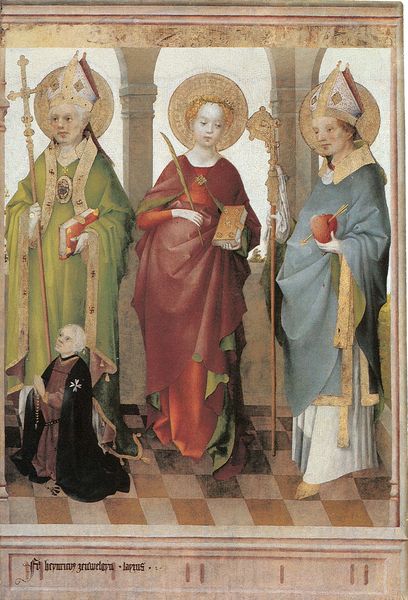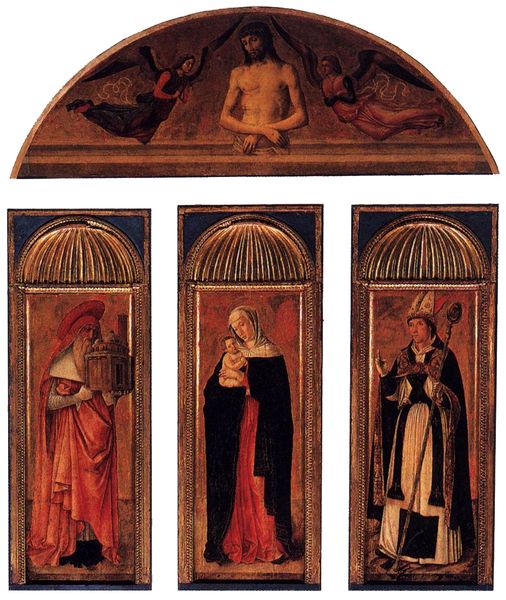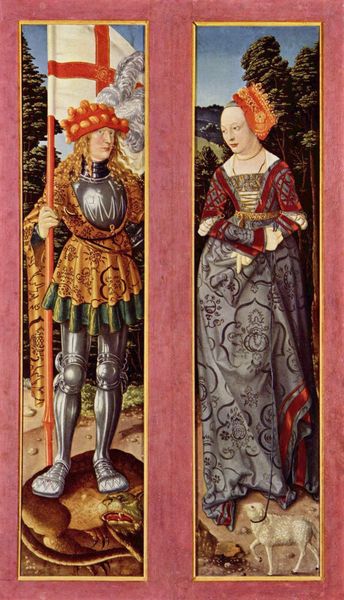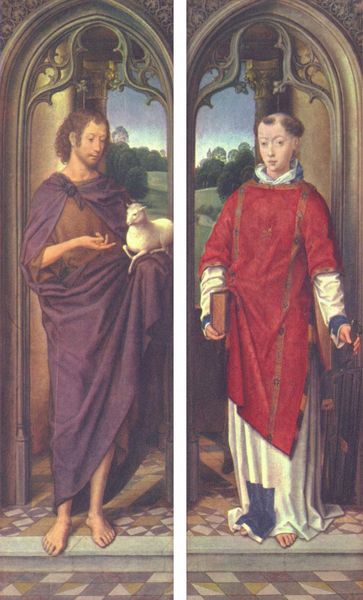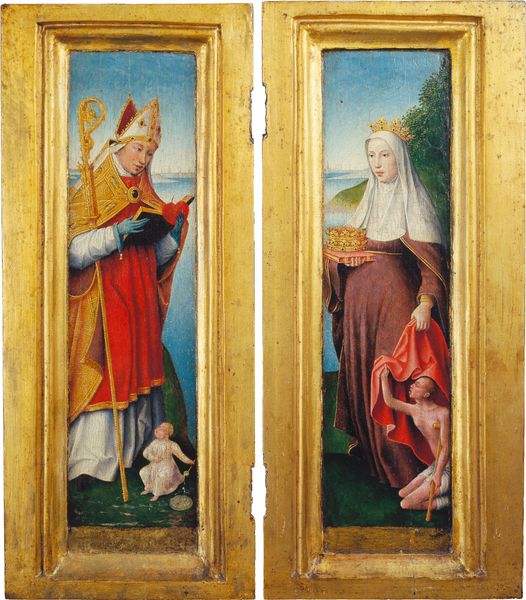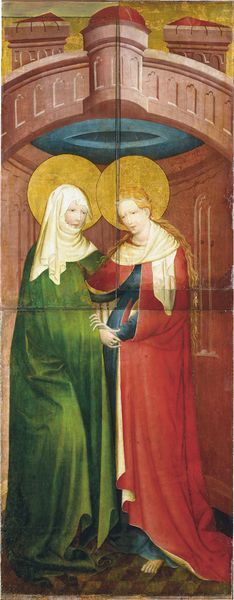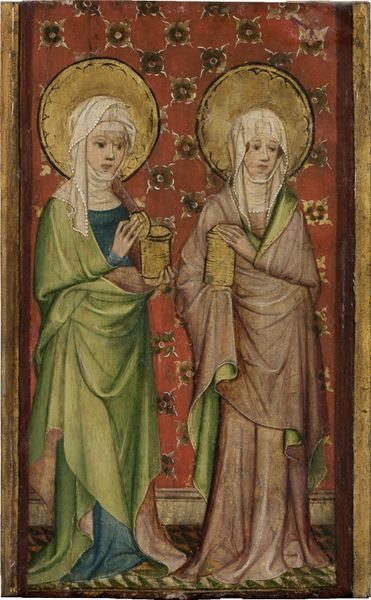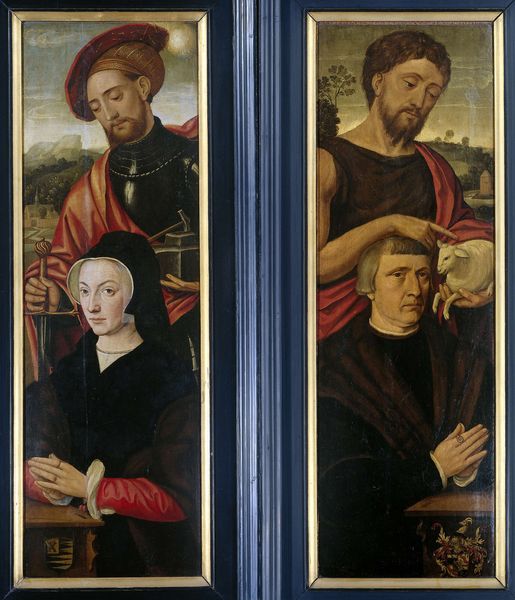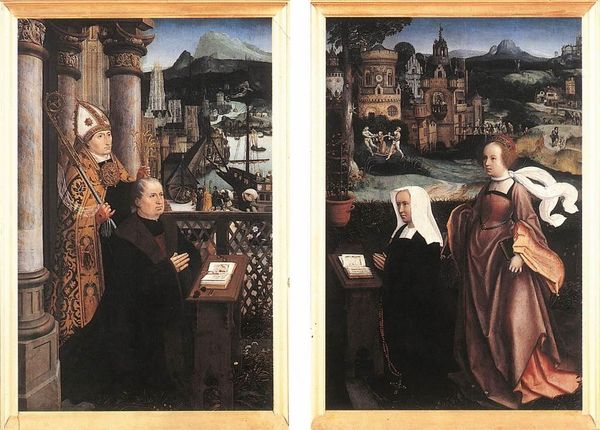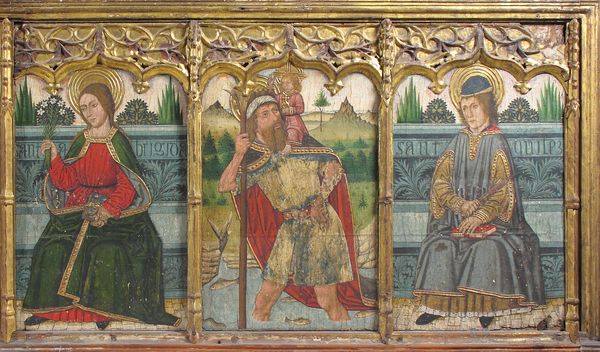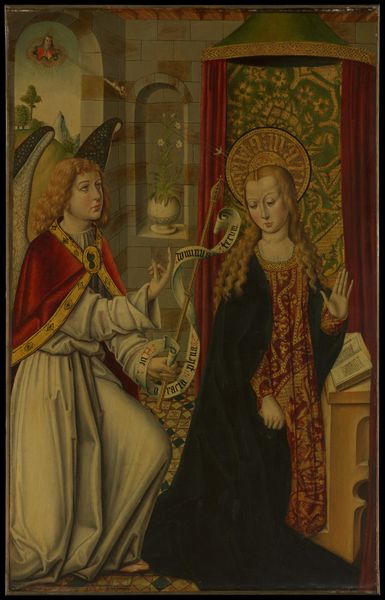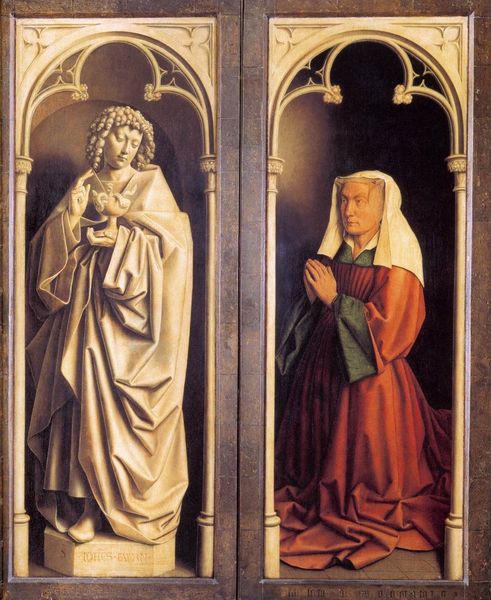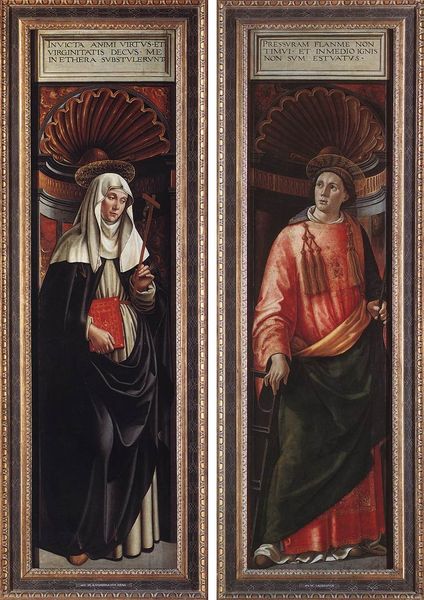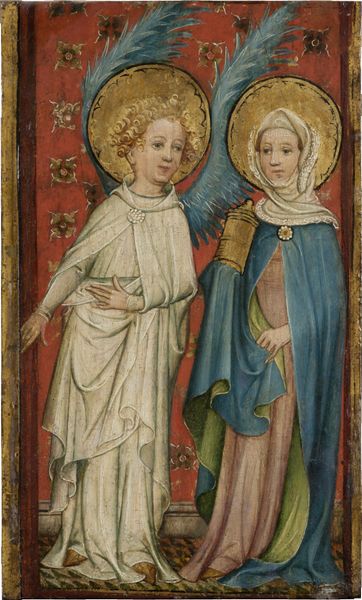
Stifterbild des Frankfurter Patriziers Claus Stalburg des Reichen und seiner Frau Margarethe vom Rhein 1504
oil-paint
portrait
oil-paint
sculpture
11_renaissance
oil painting
genre-painting
northern-renaissance
portrait art
Copyright: Public domain
Curator: Here we have Jerg Ratgeb's "Stifterbild des Frankfurter Patriziers Claus Stalburg des Reichen und seiner Frau Margarethe vom Rhein," painted around 1504 using oil. It depicts a pair of donors. Editor: My initial reaction? Well, they certainly look important. But there's a somber feel too. Like a formal dance performed under heavy skies. Curator: Let's look at the materiality here. Oil paint in this period allowed for unprecedented detail. Consider the textures—the rich fur, the patterned brocade behind them. This wasn’t just about representing individuals; it was about showcasing their status through meticulous craftsmanship. Editor: Absolutely. And I'm struck by the detail in those rosaries they're holding. Tiny little beads catching the light... they seem almost fragile against the weight of everything else. It grounds the grandiosity somehow. Do you think they’re genuinely pious, or is it a prop for the portrait? Curator: It's likely a potent combination of both. Religious patronage and devotion were intertwined with social standing. By commissioning this piece, the Stalburgs were investing in their earthly legacy but also visibly affirming their faith and aligning themselves within the socio-religious order. The production and display of art became part of a feedback loop. Editor: And what of the women’s curious headpiece, do you have any insight there? Curator: Absolutely, the intricate golden headpiece adorning Margarethe's head represents her status within the Frankfurtian high society. These status markers are key to Northern Renaissance painting where religious and portrait art reflected specific cultural, political, and commercial circumstances. Editor: It's incredible how the means of portraying wealth and status have transformed over centuries. The techniques may have modernized, yet, portraits and representations continue to serve very much the same purpose even today! It is food for thought, definitely. Curator: Indeed. Examining such historical artifacts allows us to understand these power dynamics better, and observe how labor and materials were harnessed to support those narratives. Editor: Yes, thinking about the historical context gives new meanings and perspectives to their stories.
Comments
No comments
Be the first to comment and join the conversation on the ultimate creative platform.
